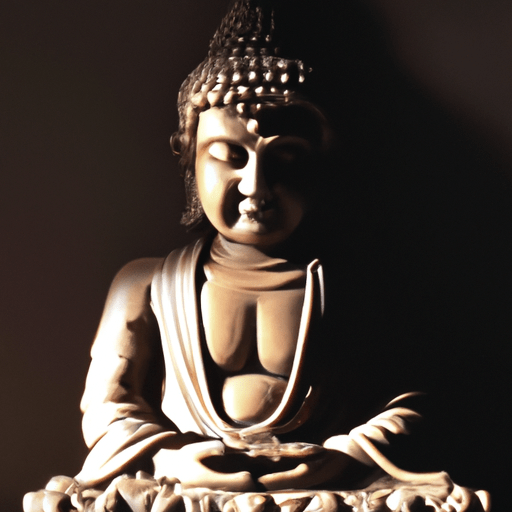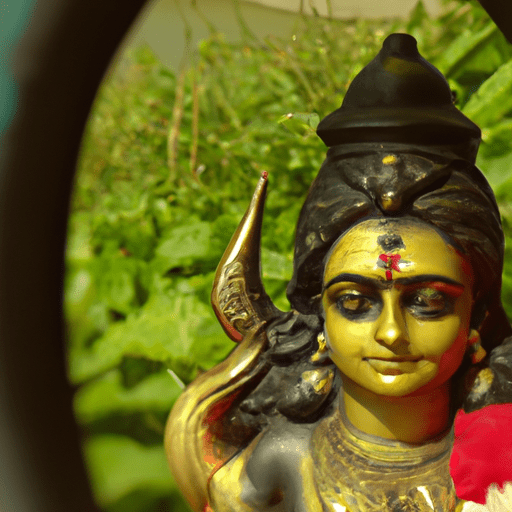Exploring the Differing Opinions on Pornography in Christianity
Pornography has been a controversial topic in Christianity for centuries. While some denominations have embraced it as a form of expression, others have condemned it as immoral and sinful. This article will explore the differing opinions on pornography in Christianity throughout history.
In the early days of Christianity, pornography was largely seen as a sin. The Bible contains several passages that condemn sexual immorality, and many early Christian leaders interpreted these passages to mean that pornography was immoral. This view was widely accepted by the Church until the 19th century, when some theologians began to argue that pornography could be used as a form of expression.
In the late 19th century, some Protestant denominations began to accept pornography as a form of expression. This view was based on the idea that pornography could be used to explore human sexuality in a safe and healthy way. This view was not widely accepted by the Church, however, and it was not until the 1960s that some denominations began to accept pornography as a legitimate form of expression.
In the 1970s, the Catholic Church began to take a more liberal stance on pornography. The Church argued that pornography could be used to explore human sexuality in a safe and healthy way, and that it could be used to educate people about sexual health. This view was not widely accepted by the Church, however, and it was not until the 1990s that the Church began to accept pornography as a legitimate form of expression.
Today, the views on pornography in Christianity vary widely. Some denominations still view it as immoral and sinful, while others accept it as a form of expression. Ultimately, it is up to each individual to decide what they believe is right or wrong when it comes to pornography.
How Judaism Views Pornography
Judaism has a long history of viewing pornography as a moral wrong. The Torah, the Jewish holy book, contains numerous passages that condemn sexual immorality and the use of pornography. In Leviticus 18:22, it states, “You shall not lie with a male as one lies with a female; it is an abomination.” This passage is often interpreted to mean that any form of sexual activity outside of marriage is forbidden.
The Talmud, a collection of Jewish law and tradition, also speaks out against pornography. In the tractate Shabbat, it states, “One who looks at a woman with the intention of deriving pleasure is considered as if he had committed a transgression.” This passage is interpreted to mean that looking at pornography is a sin.
In addition to the Torah and Talmud, Jewish rabbis have long spoken out against pornography. In the 19th century, Rabbi Samson Raphael Hirsch wrote, “The use of pornography is a sin against the soul, a sin against God, and a sin against society.” This sentiment has been echoed by many other rabbis throughout the centuries.
In modern times, many Jewish organizations have taken a strong stance against pornography. The Rabbinical Assembly, an organization of Conservative rabbis, has issued a statement condemning pornography as “a form of exploitation and degradation of human beings.” The Orthodox Union, an organization of Orthodox rabbis, has also issued a statement condemning pornography as “a form of immorality and a violation of Jewish law.”
Overall, Judaism has a long history of viewing pornography as a moral wrong. The Torah, Talmud, and rabbinical statements all speak out against the use of pornography. In modern times, many Jewish organizations have taken a strong stance against pornography, viewing it as a form of exploitation and degradation.
Examining the Islamic Perspective on Pornography
The Islamic perspective on pornography is rooted in the teachings of the Quran and the Hadith, which are the primary sources of Islamic law. The Quran condemns all forms of sexual immorality, including adultery, fornication, and homosexuality. It also prohibits the viewing of pornographic material, as it is seen as a form of sexual immorality.
The Hadith, which are the sayings and actions of the Prophet Muhammad, also condemn the viewing of pornographic material. In one Hadith, the Prophet Muhammad is reported to have said, “Whoever looks at a picture of a woman and then has sexual thoughts about her, has committed adultery with her in his heart.” This statement is seen as a clear condemnation of pornography.
The Islamic perspective on pornography is further reinforced by the teachings of Islamic scholars. Many Islamic scholars have argued that pornography is a form of exploitation and objectification of women, and that it can lead to a variety of social ills, such as increased violence against women and an increase in promiscuity.
In addition, Islamic scholars have argued that pornography can lead to a decrease in moral values and a decrease in respect for marriage and family. They argue that pornography can lead to an increase in divorce rates, as well as an increase in the number of children born out of wedlock.
Overall, the Islamic perspective on pornography is clear: it is seen as a form of sexual immorality and exploitation, and should be avoided. Islamic scholars have argued that it can lead to a variety of social ills, and should be avoided in order to maintain moral values and respect for marriage and family.
The Buddhist Perspective on Pornography
The Buddhist perspective on pornography is rooted in the teachings of the Buddha, who taught that all forms of sexual misconduct are to be avoided. The Buddha taught that sexual misconduct includes any form of sexual activity that is not conducted within the bounds of a committed relationship. This includes viewing, producing, or distributing pornography.
The Buddhist view of pornography is based on the idea that it is a form of sexual misconduct that can lead to suffering. Pornography can lead to feelings of guilt, shame, and regret, as well as feelings of disconnection from one’s partner. It can also lead to a distorted view of sexuality, which can lead to unhealthy relationships and a lack of respect for oneself and others.
Additionally, the Buddhist view of pornography is also based on the idea that it can lead to a lack of mindfulness. Pornography can be a distraction from the present moment, and can lead to a lack of focus on one’s spiritual practice. It can also lead to a lack of self-control, which can lead to further suffering.
The Buddhist view of pornography is also based on the idea that it can lead to a lack of respect for oneself and others. Pornography can lead to objectification of others, and can lead to a lack of respect for one’s own body. It can also lead to a lack of respect for the bodies of others, which can lead to further suffering.
Moreover, the Buddhist view of pornography is also based on the idea that it can lead to a lack of compassion. Pornography can lead to a lack of empathy for those who are depicted in it, and can lead to a lack of understanding of the suffering that can be caused by it.
The Buddhist view of pornography is ultimately based on the idea that it can lead to suffering, and should be avoided. The Buddha taught that all forms of sexual misconduct should be avoided, and this includes viewing, producing, or distributing pornography.
Hinduism and Pornography: A Closer Look
Hinduism is one of the oldest religions in the world, and its teachings have been around for thousands of years. As such, it has a long and complex history when it comes to the topic of pornography. In this article, we will take a closer look at the history of Hinduism and pornography, and how the two have interacted over the centuries.
The earliest references to pornography in Hinduism can be found in the Vedas, the oldest scriptures of Hinduism. In these texts, there are references to sexual activities, including descriptions of sexual acts and the use of sexual imagery. However, these references are not explicit and are often used in a symbolic or metaphorical way.
In the later Vedic period, there is evidence of a more explicit attitude towards pornography. In the Mahabharata, for example, there are descriptions of sexual acts and explicit sexual imagery. This is in contrast to the earlier Vedic period, where such explicit references were rare.
In the Puranas, which are later Hindu texts, there is a more explicit attitude towards pornography. These texts contain explicit descriptions of sexual acts and explicit sexual imagery. This is in contrast to the earlier Vedic period, where such explicit references were rare.
In modern times, Hinduism has become more accepting of pornography. In recent years, there has been a growing acceptance of pornography in India, with many Hindu temples now allowing pornographic films to be shown in their premises. This is in contrast to the earlier Vedic period, where such explicit references were rare.
Overall, it is clear that Hinduism has had a complex relationship with pornography over the centuries. While there have been explicit references to pornography in some Hindu texts, it has generally been seen as something to be avoided. In modern times, however, there has been a growing acceptance of pornography in India, with many Hindu temples now allowing pornographic films to be shown in their premises.






Fuck religion. Sinning is fun!!!